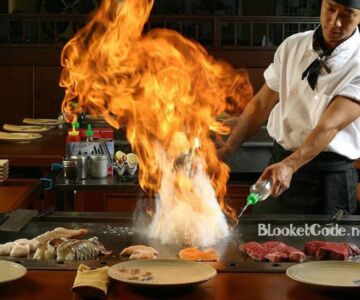In 2024, energy efficiency is no longer just a trend; it’s a necessity for restaurants. With rising energy costs and growing environmental concerns, investing in energy-efficient equipment is a smart move.
Not only does it reduce utility bills, but it also enhances sustainability efforts. Restaurants can significantly cut costs while improving their bottom line.
This article explores essential energy-efficient equipment options, their potential savings, and how to choose the right solutions for your establishment. Discover how these changes can help your restaurant thrive in a competitive market.
Key Types of Energy-Efficient Equipment
If we turn specifically to restaurants, it is now impossible to overemphasize the role of energy-efficient cooking appliances. Modern technologies when applied to ovens, grills, and fryers, energy intake can be reduced drastically.
For example, there are such models as convection ovens which use fans to distribute the hot air around the chamber and therefore, cook the food faster and evenly using less energy than convection ovens.
Induction cooktops are another which are also very good; they heat the cookware without directly heating the surface, meaning preparation is faster and energy consumption is relatively low.
That is why by choosing these appliances as investments, restaurants can significantly improve food quality as well as reduce energy expenses.
Refrigeration systems are vital for any restaurant, and modern commercial refrigeration equipment is designed to be energy-efficient. Look for Energy Star labels to ensure units meet efficiency standards. Options like variable speed compressors and improved insulation further enhance energy savings.
Smart refrigerator systems can monitor temperatures and adjust energy use based on real conditions. Implementing these systems not only reduces costs but also improves food safety and quality, essential for a successful restaurant business.
Cost Savings and Return on Investment
Energy efficient equipment always entails a first cost that can be expensive but in the long run, it is cost efficient. Restaurants can expect savings spanning anything between 30% and potentially more on their utility bills when using such equipment.
For instance, a commercial kitchen that decides to replace old fryers with high-efficiency fryers will be in a position to save thousands of dollars in energy bills per year. Also, optimized energy appliances are guaranteed and have longer durability compared to their non-efficient counterparts, making them such valuable assets.
These savings may not only translate into real dollar savings but may mean freeing up resources for other important parts of the business.
Examples of real-life applications are provided to explain the role of energy-efficient equipment. For example, a midfield restaurant that changed to energy-efficient coolers and stoves came across that the returns were less than three years.
This is true because the cost of energy was relatively low, and governments have offered incentives for green upgrades in the form of tax reliefs. In addition, best practices regarding the use of energy can be used to improve the image of restaurants attracting buyers aware of ecological problems and boosting their loyalty.
These findings imply that to advance sustainability and operate effectively, restaurants need to exhibit a commitment to sustainability to stand out and appeal to consumers, hence increasing sales and profitability.
Choosing the Right Equipment for Your Restaurant
When choosing energy-efficient equipment for your restaurant, these factors need to be taken into account. First of all, it is worth defining particular requirements of your kitchen connected with the kind of food you cook and the number of clients you are going to welcome.
For example, fast-food joints may use equipment such as rapid food fryers or griddles, while an upscale restaurant will need state-of-the-art ovens such as sous vide machinery. Furthermore, take into account, the amount of space that is available to be used for your kitchen and its design.
The assets that will help organize production without overloading the work area are also essential for the effective functioning of the enterprise.
Energy efficiency ratings and certifications are also other indices that must be considered when decision-making. Buy appliances that are labeled Energy Star these are more energy efficient than the others on the market. Assessing energy use data, including kilowatt hours per unit, or kilowatt hours per meal served can give a clear pointer to which is the most effective energy choice to be made.
Moreover, suppliers can offer their advice based on their professional experience consider the concrete needs of the restaurant, and offer products that effectively save energy. That way, when choosing energy-efficient equipment to invest in – you can do so bearing specific operational needs and costs in mind.
Future Trends in Energy Efficiency for the Restaurant Industry
As the restaurant industry changes, several trends in energy efficiency are likely to arise as follows. However, a major trend that should be considered is the smart technology incorporated into many restaurant kitchen equipment.
Smart appliances can report energy usage in real-time, meaning that owners of restaurants can base their decisions on facts. For example, smart refrigeration can notify managers whenever the temperature deviates, thereby saving energy and preventing spoilage.
Additionally, the latest IoT technology that can help devices communicate in the kitchen allows for optimal performance and productivity.
The rising importance of environmental initiatives, driven by customer preferences and policy changes, is becoming increasingly significant in the restaurant industry.
Many restaurants are now seeking renewable energy sources, such as solar energy, which can reduce reliance on conventional energy and lead to long-term savings. Additionally, incentives and grants are being offered to encourage energy-saving measures.
This shift highlights a growing commitment to sustainability, paving the way for technologies that enhance efficiency. By staying informed on these trends, restaurant owners can thrive in a competitive market while contributing to a sustainable future.
Conclusion
Purchasing energy-efficient equipment is one of the major tasks for restaurants that have to minimize expenses and improve sustainability by 2024.
It is possible to install energy-efficient cooking devices and refrigerators that will help the restaurants to save a lot of electricity and therefore little cost of electricity will be incurred. The resulting long-term savings along with the possibilities to enhance the quality of food and the satisfaction of their customers make this shift important.
With technology being dynamic, restaurant management must ensure that they keep abreast with the trends and developments that exist in the markets to enable the formulation of proper decisions that would matter a lot to the restaurants’ operations.
Lastly, the implementation of energy-efficient solutions not only helps a certain enterprise but also helps the restaurant industry become more environmentally friendly overall.




